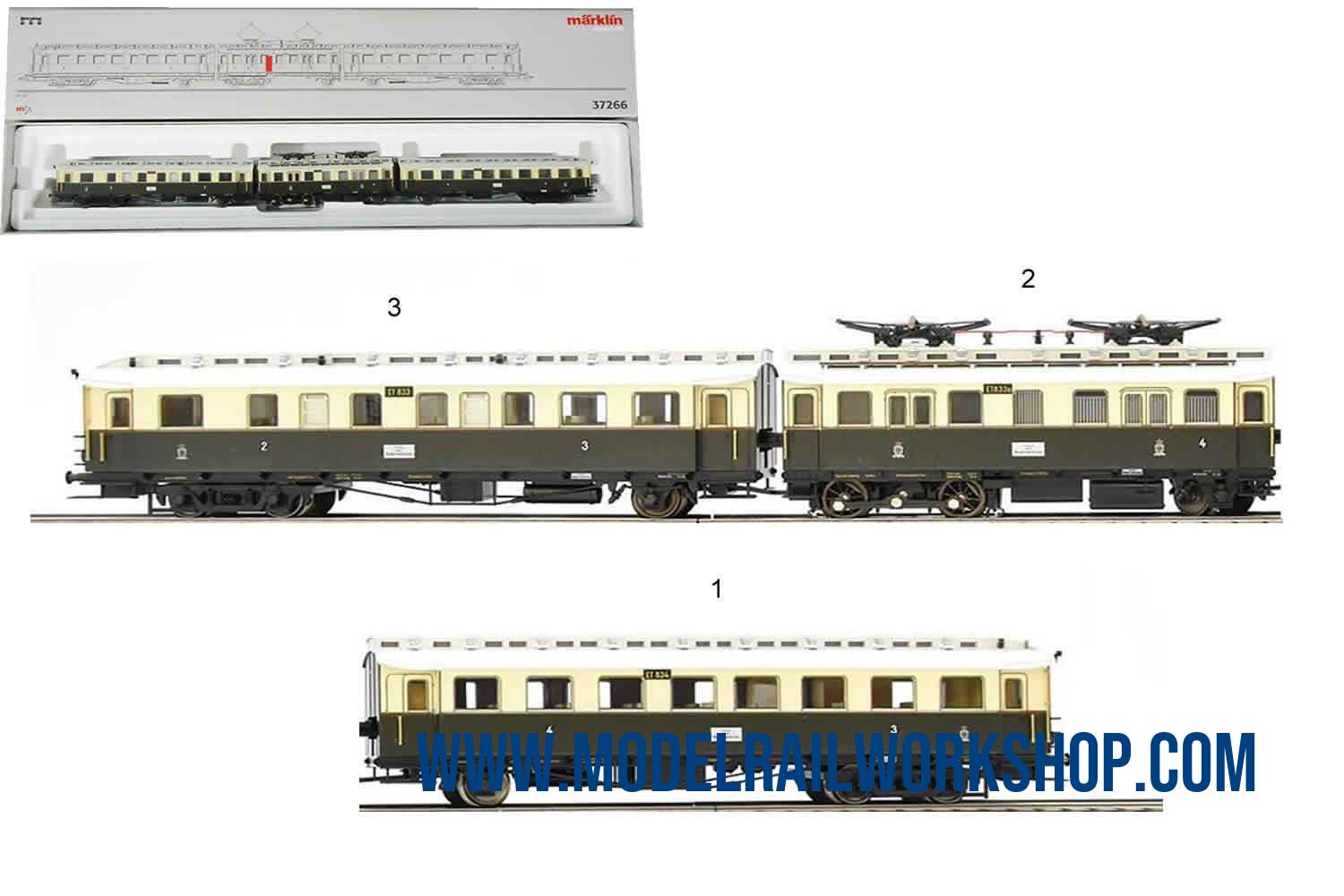
| KEY DATA | |
|---|---|
| Product Name | 37266 Electric Powered Rail Car 2nd_3rd_4th cl- class ET87 |
| Object type | Locomotive-Electric |
| Product Line | Märklin MHI |
| Era | 1945-1970 (III) |
| Manufactured years | 2005-2006 |
| Type of housing | Synthetic |
| Length | 49.0 cm |
| Technology | Digital 6090mfx |
| Railway company | DE-KPEV Köhnlige Preussische Eisbahn |
| Koll valuation (Year) | 170€ (2022) |
| Url to Märklin | Klick to GoTo www.maerklin.de |
| No | Obj.No | Obj.txt | Category | Description |
|---|---|---|---|---|
| - | ET 833 | - | - | Passenger car - Beige/Dark olive green 2n2 /3rd cl |
| - | ET 833a | - | - | Loc car - 4th cl |
| - | ET 834 | - | - | Passenger car - 4ht/3rd cl |
| Description | |
|---|---|